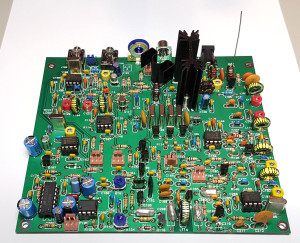If you’re into QRP, I want to encourage you to consider learning morse code. While you can make plenty of contacts with voice or digital, it’s hard to beat the “cw” (continuous wave) mode for efficiency.
With voice, everything you say is stretched out and occupies about 3 kHz of bandwidth. With morse code, that energy is compressed/condensed into a sliver of the bandwidth, concentrating the energy like a laser pointer!

